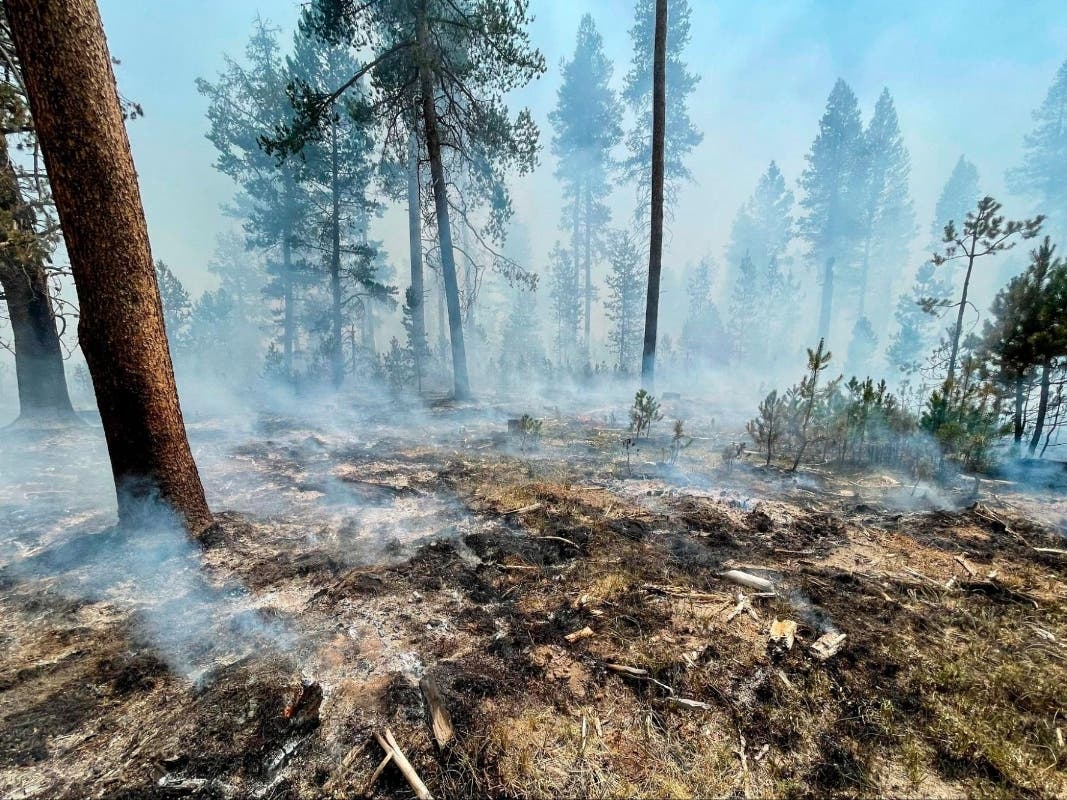Weather
Wildfires Cause Air Quality Problems In New Jersey
Smoke plumes from the wildfires burning in the Western United States and Canada can be especially dangerous to some groups in New Jersey.

NEW JERSEY — The wildfires in the Western United States and Canada are creating air quality issues in the Garden State and elsewhere across the country — in some cases triggering pollution alerts and warnings for people to stay inside.
Wildfires are no longer just a problem for the states with charred forests. Smoke carried thousands of miles by jet streams and cross-continental winds contain huge volumes of particulate matter that can be harmful if breathed in, leading to both immediate and long-term health problems, according to research.
Children, older people, and those with underlying health problems are particularly at risk.
Find out what's happening in Princetonwith free, real-time updates from Patch.
In New Jersey, the air quality on Saturday and Sunday is forecast to be between 'good' to 'moderate,' according to the Environmental Protection Agency, which maintains a fire and smoke map showing the effect of dozens of U.S. and Canada wildfires on air quality.
What that means is a cold front will approach the Garden State early on Saturday and will slowly make its way south and east by mid-day. At this time, it is expected to stall along the I-95 corridor allowing the chance for showers and thunderstorms to develop. Behind the front, expect a relief from the heat and humidity as a clean and cooler air mass will arrive. As a result, air quality will average in the good to moderate range. On Sunday, temperatures will reach the low 80s, sunny skies, and winds out of the north/northeast will keep air quality in the good range.
Find out what's happening in Princetonwith free, real-time updates from Patch.
A quiet summer day is forecast to start the workweek on Monday with mostly sunny skies, temperatures reaching the mid-80s, and light winds. Northeasterly winds in the morning will give way to onshore winds in the afternoon keeping ozone and fine particle concentrations in the upper good to low moderate threshold.
When the air quality shows 'moderate' smoke sensitive individuals need to keep their outdoor activities light and short, as local conditions can change rapidly. They should pay attention and take action if they don't feel well.
The map has six color-coded categories: good, moderate, unhealthy for sensitive groups, unhealthy, very unhealthy, and hazardous. It also includes information on groups of people who may be adversely affected, as well as steps that can be taken to reduce exposure to air pollution.
Metropolitan areas of 350,000 people or more are required to report their daily air quality index. Data is standardized across the states on the following pollutants: ozone, particle pollution (also called particulate matter), carbon monoxide, nitrogen dioxide and sulfur dioxide.
What Makes It So Harmful?
A study published in January in the journal Proceedings of the Natural Academy of Sciences said a large wildfire, such as the Bootleg Fire currently burning in Oregon, can account for 25 percent of dangerous air pollution in the United States.
“What they’re experiencing on the East Coast from our West Coast fires shows it’s a nationwide and a global problem,” Mary Prunicki, the director of air pollution and health research at Stanford University, told National Geographic.
Here’s what makes wildfire smoke so dangerous:
Each plume of wildfire smoke is unique. About 80 percent of it is made up of fine particulate matter unique to the types of trees, buildings and other objects burned in a wildfire.
“These microscopic particles can penetrate deeply into your lungs,” according to the EPA. “They can cause a range of health problems, from burning eyes and a runny nose to aggravated chronic heart and lung diseases.”
Particle pollution exposure can also cause premature death, the agency says.
It’s especially important for the following groups of people to closely monitor the air quality index:
- People with heart or lung diseases and older adults, who are more likely to have those conditions than younger people.
- Children, including teenagers; because their respiratory systems are still developing, they breathe more air (and air pollution) per pound of body weight than adults, they’re more likely to be active outdoors and they’re more likely to have asthma.
- People with diabetes, who are more likely to have underlying cardiovascular disease.
- Pregnant women, because there may be potential health effects for them and their developing fetus.
Here are some symptoms to watch for:
- Burning eyes, a runny nose, cough, phlegm, wheezing and difficulty breathing — symptoms that may worsen among people with heart and lung diseases.
- Chest pain, palpitations, shortness of breath or fatigue among people with heart disease.
- Difficulty breathing as deeply or vigorously as usual, and symptoms such as coughing, phlegm, chest discomfort, wheezing and shortness of breath among people with lung diseases.
The EPA says everyone should limit their exposure to smoke, and that it’s especially important for people at risk for particle-related effects to talk to their health care providers about specific steps they should take.
Air cleaners can help reduce particulate matter indoors as long as they’re the right type and size, and that they don’t generate ozone. Also, the EPA advises, have a supply of N95 or P100 masks on hand to wear when it’s necessary to be outside.
Get more local news delivered straight to your inbox. Sign up for free Patch newsletters and alerts.